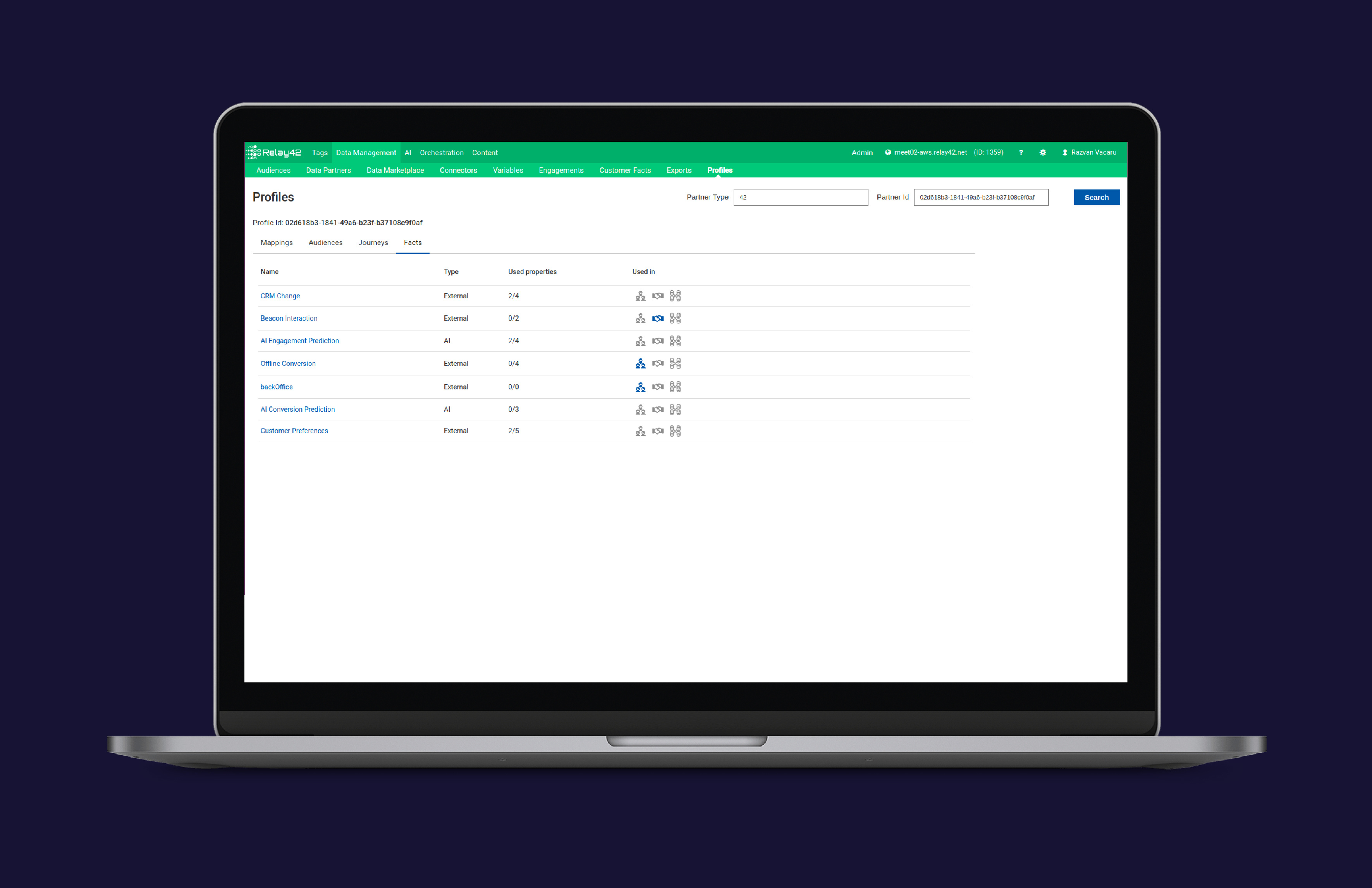The Cookieless Future and First-Party Data - What CMOs Need to Know
by Relay42 on 19.5.2022

It seems like barely a week goes by without a change to data privacy regulations or an update to GDPR. If you’re finding it hard to keep up on top of your responsibilities as a marketer or business leader, you’re not alone.
You’re probably aware that Firefox and Safari have already blocked third-party cookies and you may have heard that Google has announced that it will officially stop supporting third-party cookies on its Chrome browser by the end of 2023. But what does that mean for businesses that rely heavily on third-party cookies? How will they continue to track users, and harness these powerful insights to deliver relevant, personalized advertising?
We believe that first-party data is the answer to business growth in a cookieless future - and we’re in good company. In fact, research from Deloitte shows that 61% of high-growth companies are already shifting to a first-party data strategy.
Read on for a high-level overview of the current situation with customer data and to discover how to future-proof your marketing strategy to ensure commercial growth.
The end of cookies as we know them - the facts
- As a result of tightening EU privacy regulations, browsers are limiting or stopping the support of external marketing cookies.
- Third-party cookies are currently still partially available, depending on the browser type and settings. However, companies using marketing cookies are switching to server-to-server integrations (IAB, Facebook) and Chrome will soon join Firefox and Safari in blocking all third-party cookies.
- Existing advertising methods will become a lot less effective.
How is digital marketing impacted?
1. Personalization on paid media (retargeting) will be highly impacted
Third-party cookies allow us to identify the customer and provide relevant messaging to the right audience. Without external cookies, businesses will not be able to track users between websites (e.g programmatic advertising) or support a personalized chat functionality provided by a third-party partner.
2. The 360-degree customer view will become incomplete
As marketers, we want to build full customer profiles, based on the interests and behavior of each customer. With third-party data becoming irrelevant, the existing customer profiles will be rendered incomplete. On top of that, some browsers like Safari, also restrict first-party cookies based on JavaScript which means that the website can only recognize visitors that have been there in the past seven days.
3. Onsite personalization & web analytics will suffer
If you’re not able to identify the visitors on your website, you won’t be able to provide a personalized experience. This will be particularly important for websites with a wide variety of offerings such as airlines and retailers. Furthermore, it will have a negative impact on the performance of the website as the website will treat returning visitors as new visitors.
What your team needs in order to solve the challenges
Here are a few practical tips for your digital marketing team:
- Move data collection from the client-side to the server-side.
- Share data with external parties via server-to-server connection rather than via pixels.
- Set a stable user identifier via the server to avoid lifetime issues (7 days for js set cookies in Safari).
- Connect ID’s to profiles and enrich these profiles to activate/forward them to channels.
- Build use cases to gather first-party data on your own channels (website, app).
Like all new marketing activities, this can feel like a challenge at first. But you don’t have to do it alone. Contact our team today to find out how we can help.
What leading digital marketing experts say about the transition to first-party data
How to thrive in a first-party data world
While the loss of third-party data might be a blow to marketers initially, it is also an opportunity to get ahead of the competition and collect data from your own assets.
Invest in marketing technology based on first-party data
Now you have a good understanding of the first-party data you can work with, the next step is to invest in a centralized, integrated, and unified platform. Up until recently, Data Management Platforms (DMP) were perfectly capable of storing, organizing, and interpreting customer data. However, since they rely mostly on second and third-party data sources, they will soon become irrelevant.
To survive in a third-party cookie-free world, companies and marketers have to adapt and make the switch to first-party data. This is where Customer Data Platforms (CDP) such as Relay42 come into play. Like your CRM, a CDP acts as a single point of truth from which to create and deliver personalized, targeted marketing campaigns, understand how people are engaging with your brand and from where - and get to grips with what is working and what isn’t.
Looking for personal advice on how to make the transition to a first-party data strategy?
You May Also Like
These Related Stories

How to Be Ready for the Impact of ITP/Cookieless World

Relay42 Cookieless World Program




.png?width=786&height=265&name=Relay42%20Demo%20Banner%20(1).png)